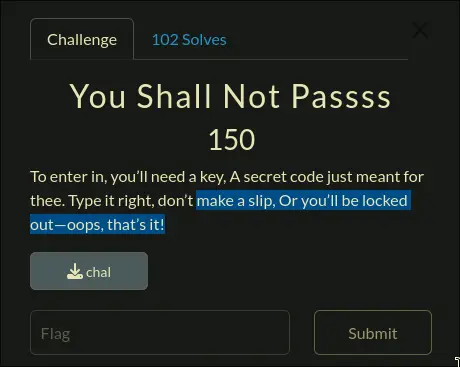 https://ctf.swampctf.com/files/10ed11c19ea792d32db42fe63d217274/chal?token=eyJ1c2VyX2lkIjoxOTEsInRlYW1faWQiOjEwOCwiZmlsZV9pZCI6OX0.Z-oU4Q.PAkwNhds6tYYtyuL1FBr838q7Fw
If you disassemble this program, you will see this as the main function:
https://ctf.swampctf.com/files/10ed11c19ea792d32db42fe63d217274/chal?token=eyJ1c2VyX2lkIjoxOTEsInRlYW1faWQiOjEwOCwiZmlsZV9pZCI6OX0.Z-oU4Q.PAkwNhds6tYYtyuL1FBr838q7Fw
If you disassemble this program, you will see this as the main function:
Control Flow
sub_10c0
- Allocates 3 pointers and 1 variable
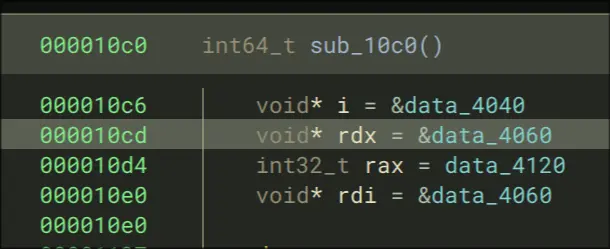
- does a while loop until i is not the address of data_405, which might just be 0. So continue changing i until it is a non-zero address.

- A lot more assignments to variables
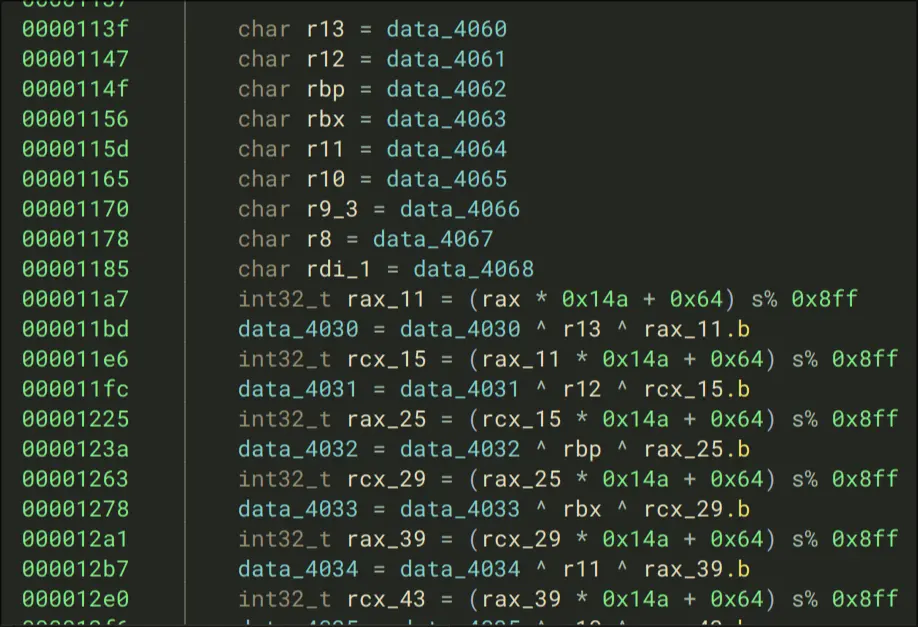

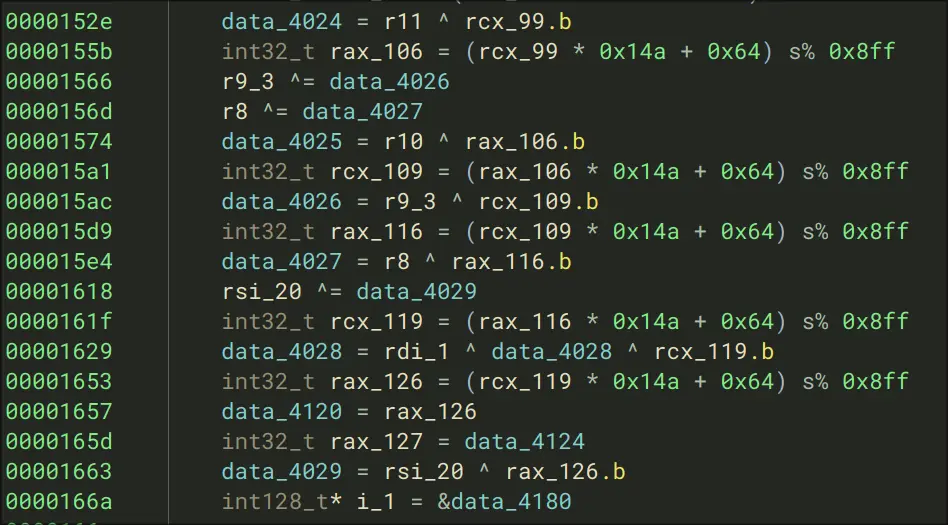
- They assign 8 variables to each character from 4060→4068
- For variables data_4030, they apply a hashing function like:
int32_t rax_11 = (rax * 0x14a + 0x64) s% 0x8ff
data_4030 = data_4030 ^ r13 ^ rax_11.b
- We see that this sort-of-thing is applied ~20 times, which means this may be suitable to the flag encoding process
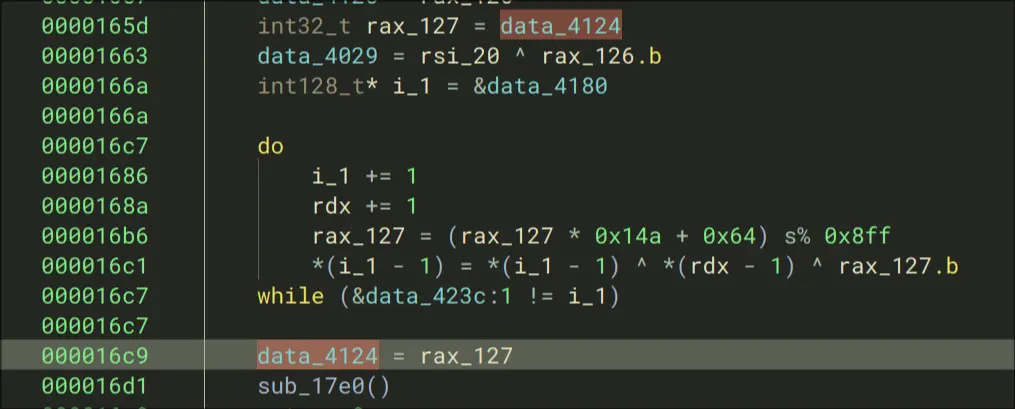
- Set some variable to some value in memory

- A new variable i_1 is assigned, then this while loop will continue to change i_1 until its not equal to the address of data_423c

- Set that original memory value to the new value changed in the funtion
sub_17e0
- mmap() a page-size of the programs memory, and return an error if it could not be memory mapped.

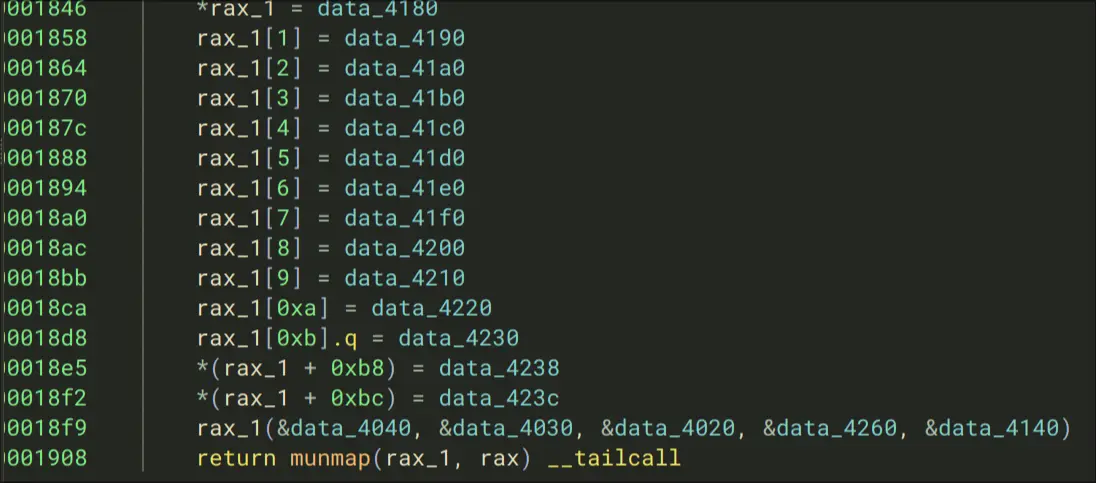 Construct a list of ?, and the first element of that list is called as a function, this means data_4180 is a function
Construct a list of ?, and the first element of that list is called as a function, this means data_4180 is a function
Debugging
- Enter libc_start_main
- Continue until we enter main which is here:
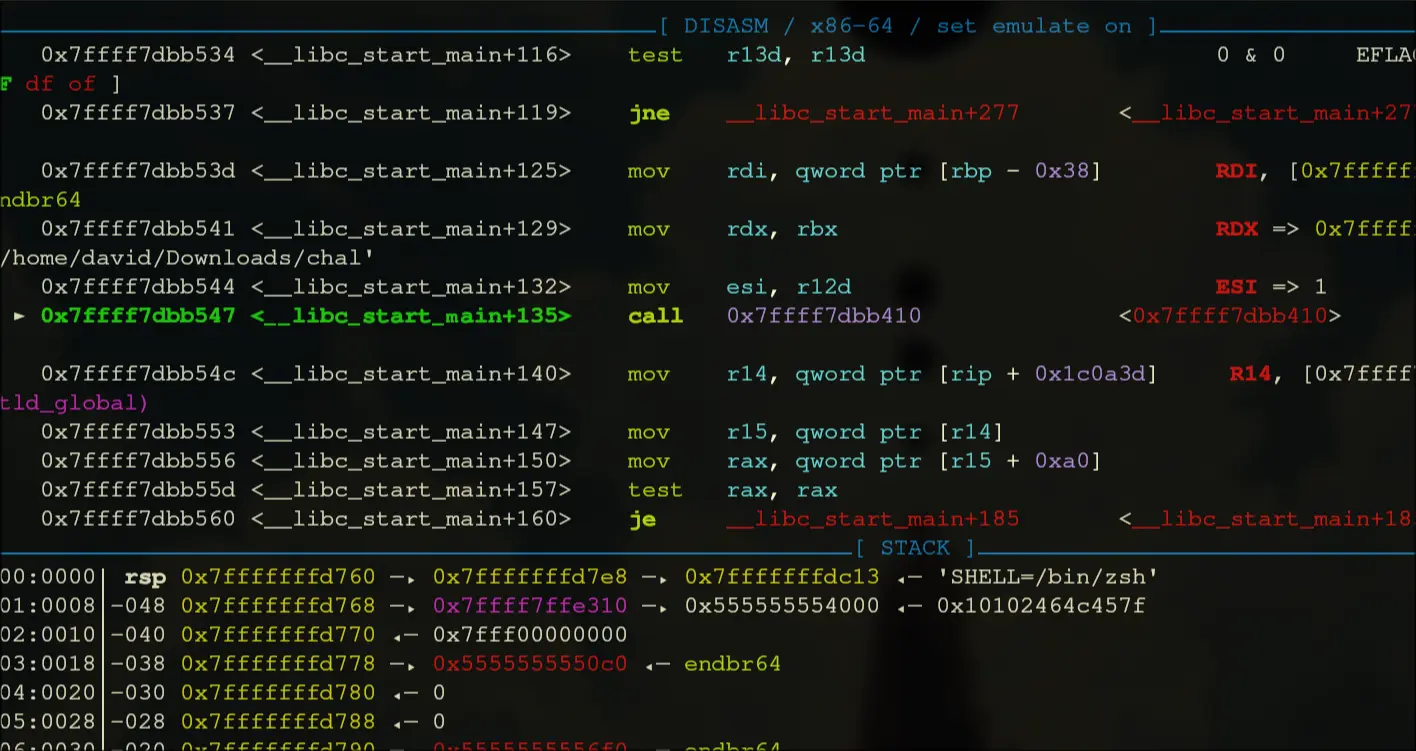
- Step into that call, then keep moving until we call rax. Our entry is at
0x5555555550c0. This is what it looks like:
- It iterates through a loop, and it runs in it for __ times.
- Afterwards, it gradually pushes the word
Incorrect\nonto the memory locations
- Then, it writes
Correct!\nto the memory space afterwards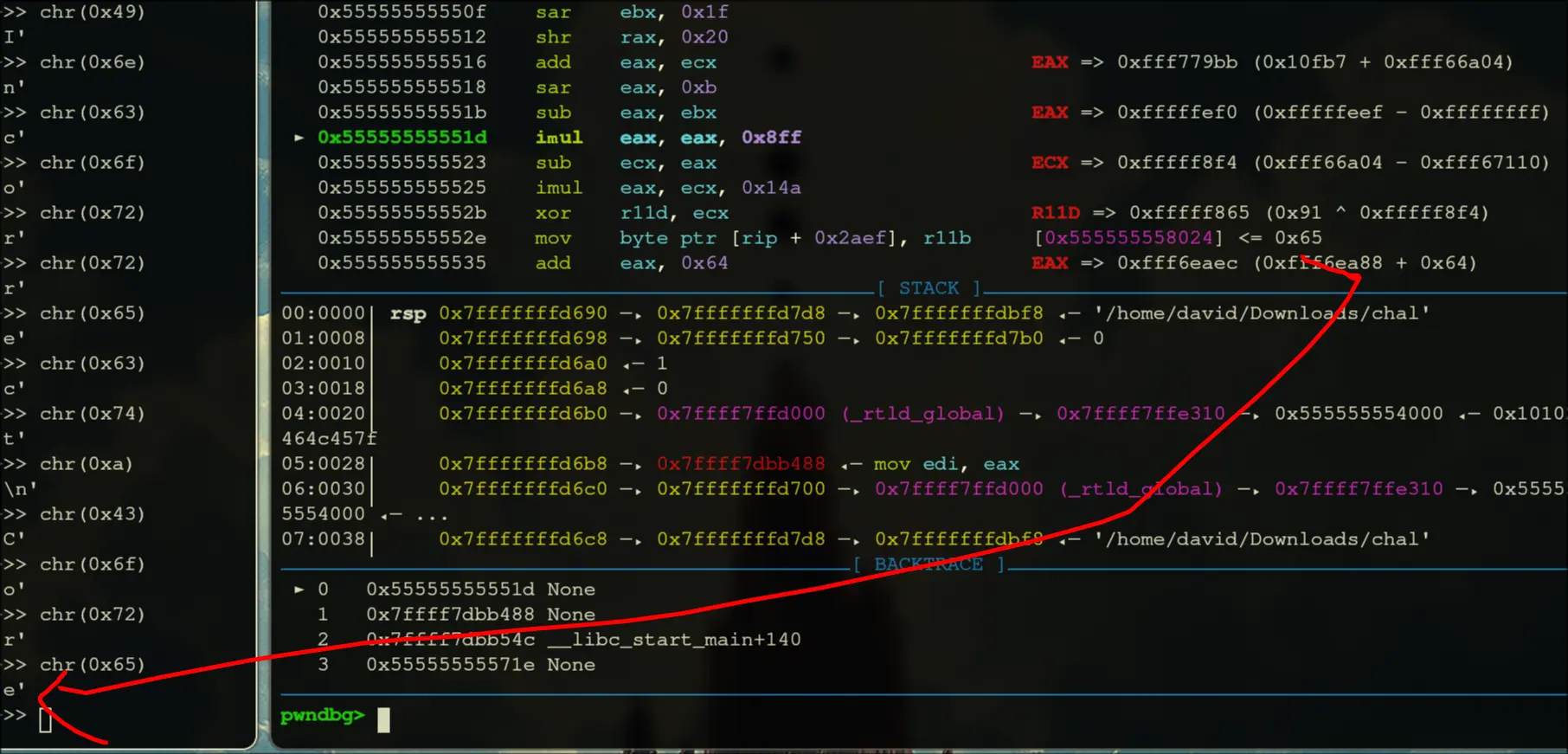
- Afterwards, save some data to the heap

- Enter a loop that repeats 181 times,
- Write the data, then jump into the next call.

- Then, it tries to mmap, and it will jump out if it fails.
- It will then move some string contents into registers

- Moves some more things around
- Moves in some constants, then calls rbp

- Inside rbp: string constants and data is being loaded

- Enters a loop that runs 38 times

- It should have a conditional move that occurs when dil is equal to r8b
 This is the key.
This is the key. - Initially, before the start of the loop, rbx is
Correct!\n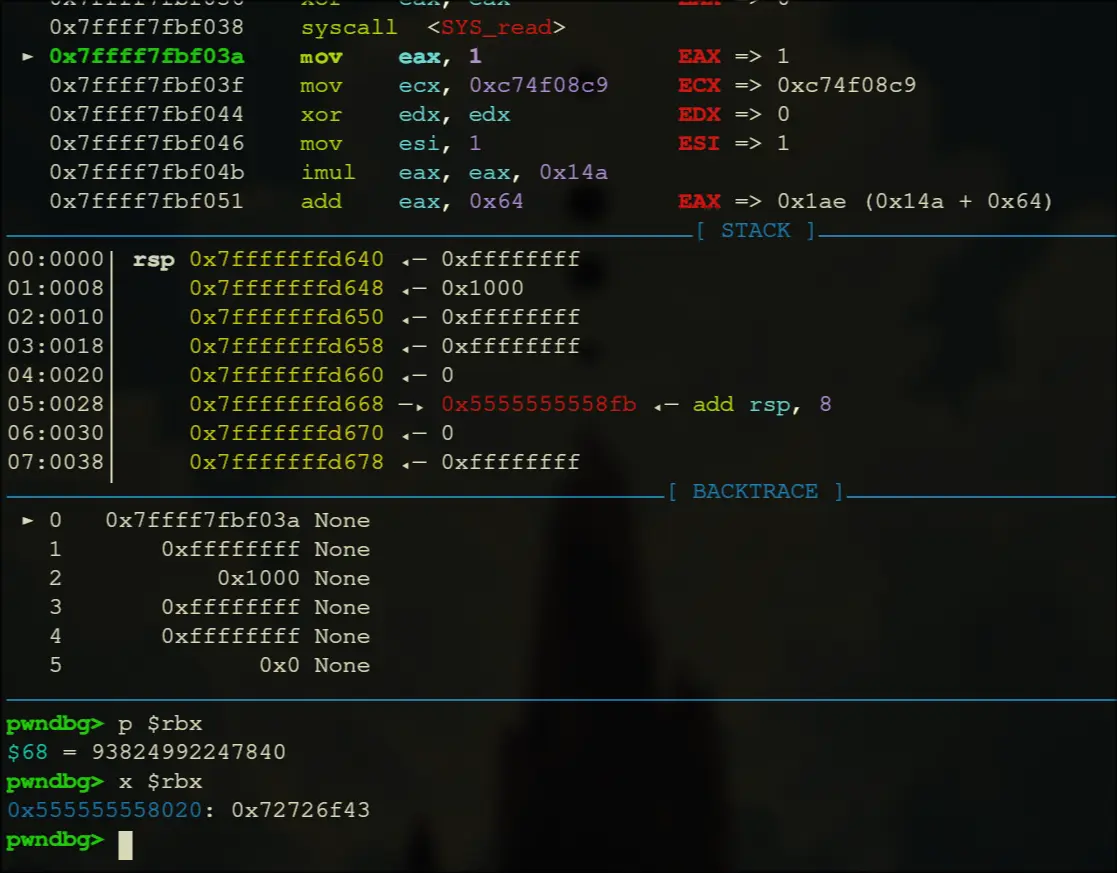
- After the loop, if esi is 0, then the value at r14 (which is
Incorrect) is moved into rbx, then it prints rbx.
 esi is initially set to 1, so something tampers with this
esi is initially set to 1, so something tampers with this

- If this comparison is not equal, then we will have to cmov
- so, this comparison must be equal all 36 times
- Setting the first character to
spasses the first check, so we know that it is decoding now character by character - Lets note all these comparisons down:
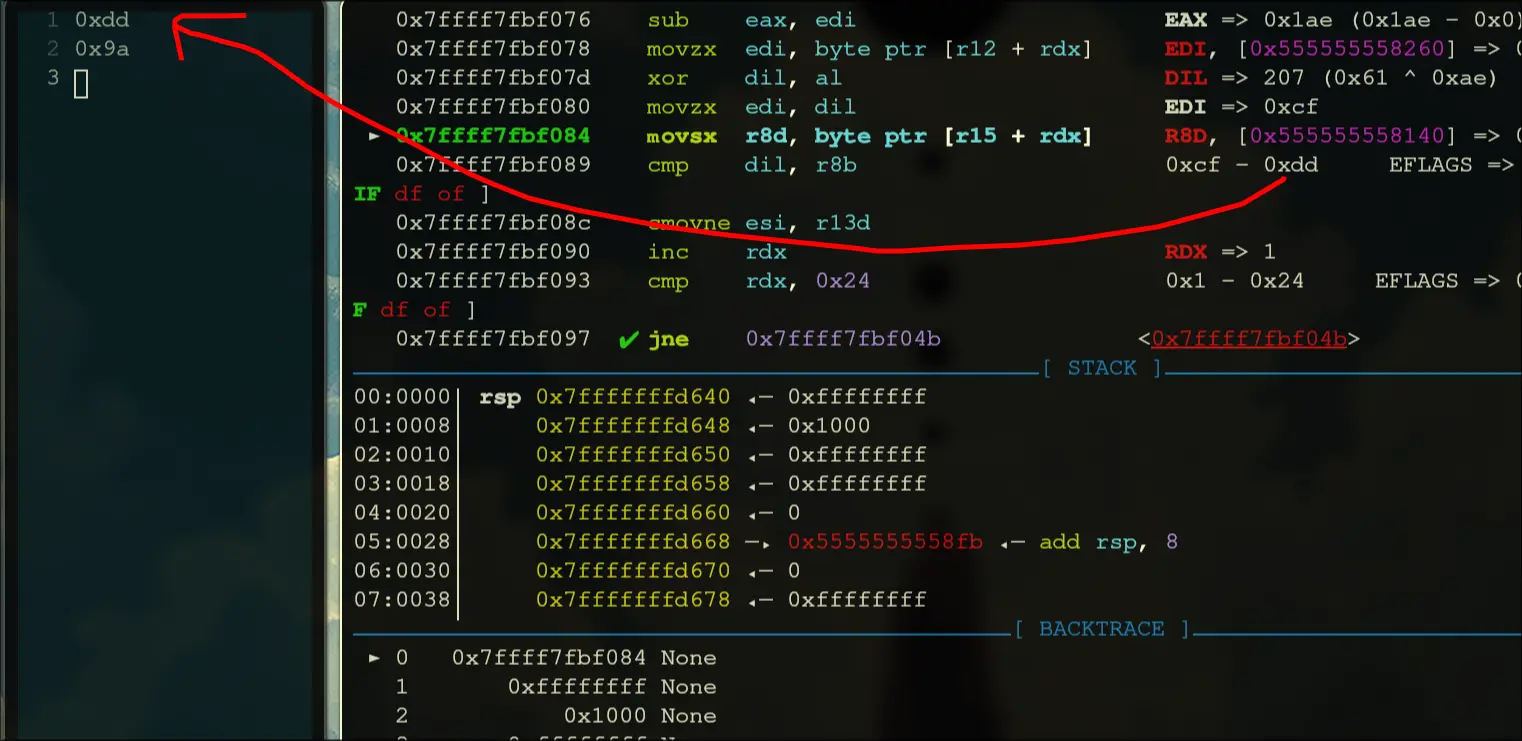
0xdd
0x9a
0xde
0x4e
0x69
0xe1
0xe9
0x2c
0xd2
0x4e
0xec
0xe7
0x18
0x26
0x6a
0x56
0x79
0xd8
0xa3
0x55
0x72
0xbc
0x76
0xc4
0xc
0xf
0x9b
0xbe
0xc6
0x81
0xe2
0x41
0x47
0xa0
0xf4
0x26
- I gpt-ed a script to help me calculate the next character, since I did not want to reverse engineer the encryption process
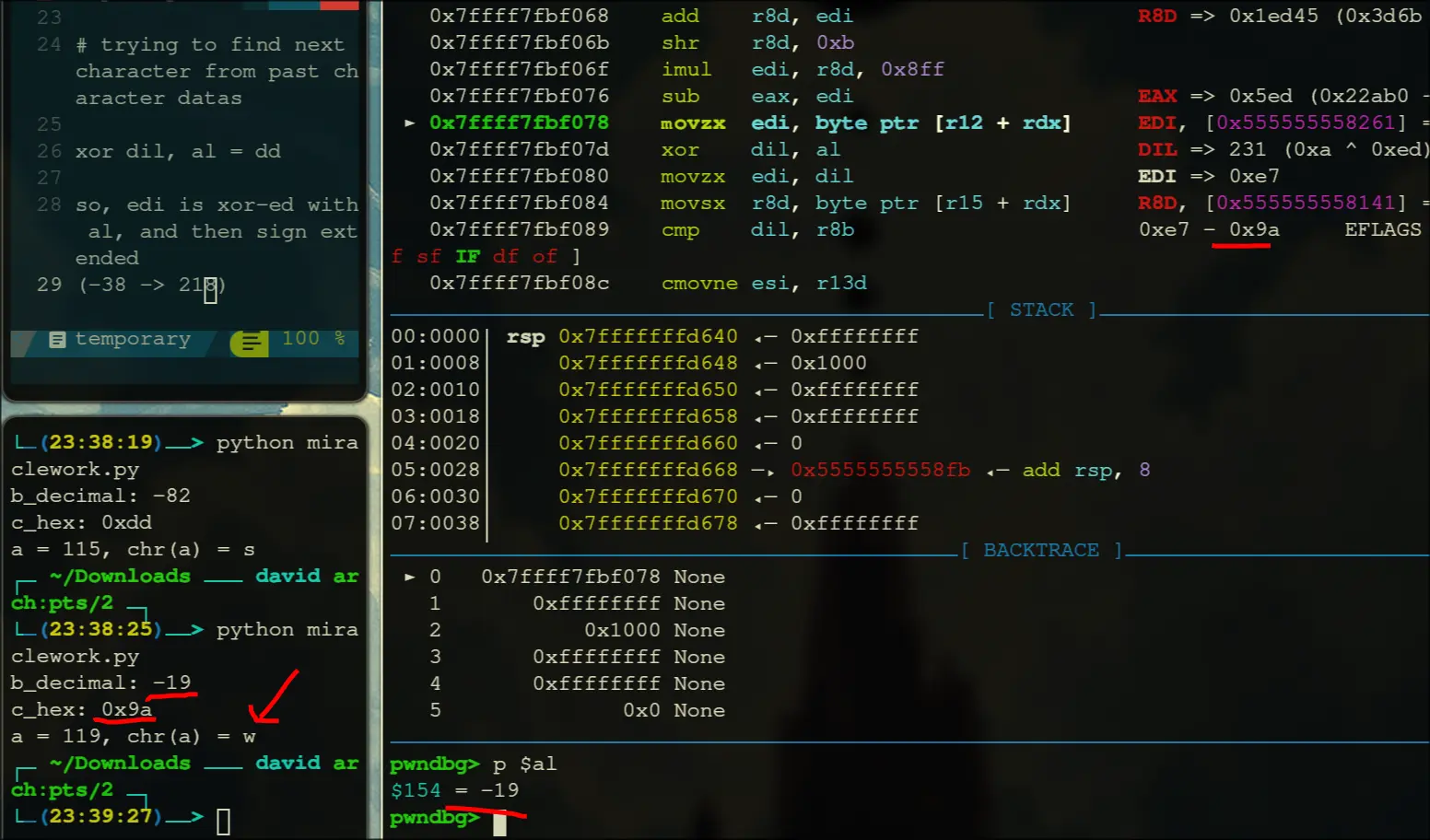 Kept on running the script until i got the flag
Kept on running the script until i got the flag
def find_a(b_hex, c_hex):
"""
Finds the value of 'a' given 'a XOR b = c'.
Args:
b_hex: The hexadecimal representation of 'b'.
c_hex: The hexadecimal representation of 'c'.
Returns:
The hexadecimal representation of 'a'.
"""
b_int = int(b_hex, 16) # Convert b from hex to integer
c_int = int(c_hex, 16) # Convert c from hex to integer
a_int = c_int ^ b_int # Perform the XOR operation
a_hex = hex(a_int) # Convert a back to hexadecimal
return a_hex
# Example usage with -82 and 0xdd
#b_decimal = -82
b_decimal = int(input('b_decimal: '))
b_hex = hex(b_decimal & 0xFF) #ensure 8 bit representation.
#c_hex = "0xdd"
c_hex = input("c_hex: ")
result_hex = int(find_a(b_hex, c_hex), 16)
print(f"a = {result_hex}, chr(a) = {chr(result_hex)}")insert that video i took here
swampCTF{531F_L0AD1NG_T0TALLY_RUL3Z}
Thoughts
- Is this program a flag checker?
- When you run the first function, these are just constant hard-coded values that dont interact with the input right?
- The user input function is likely within the rax.



